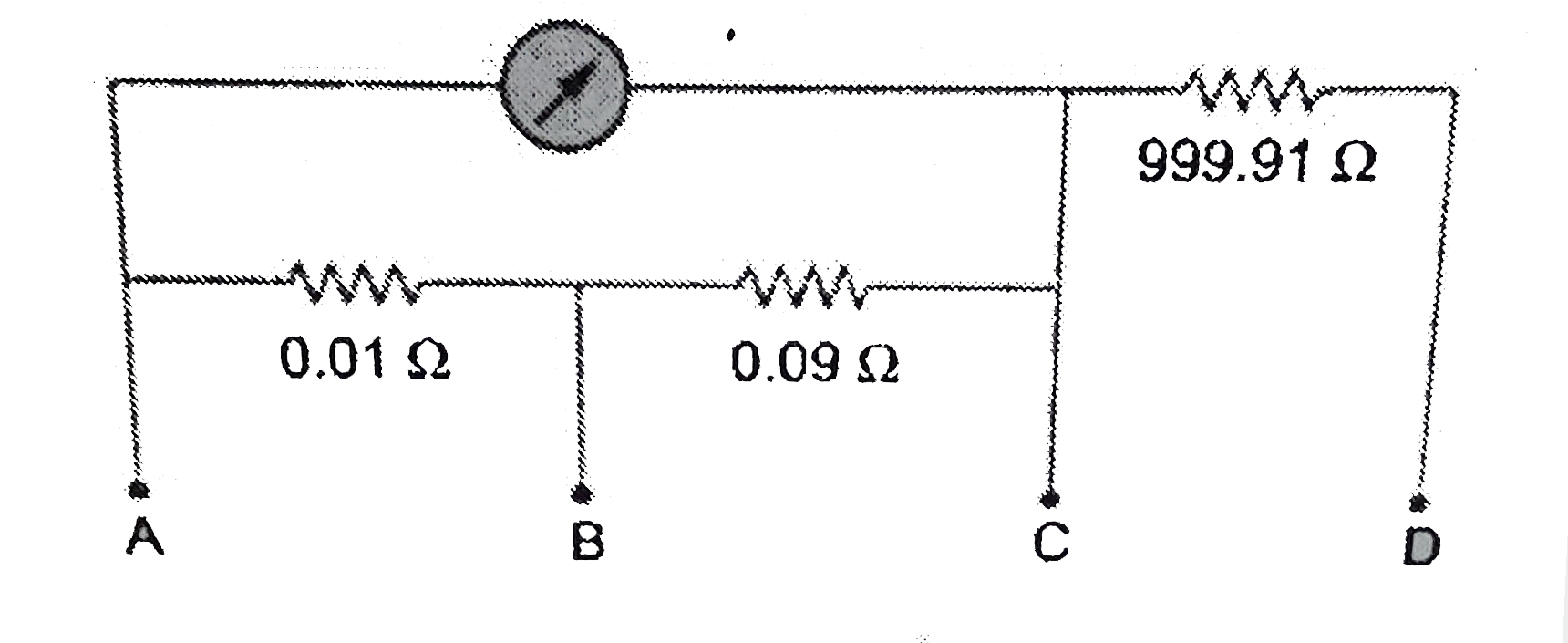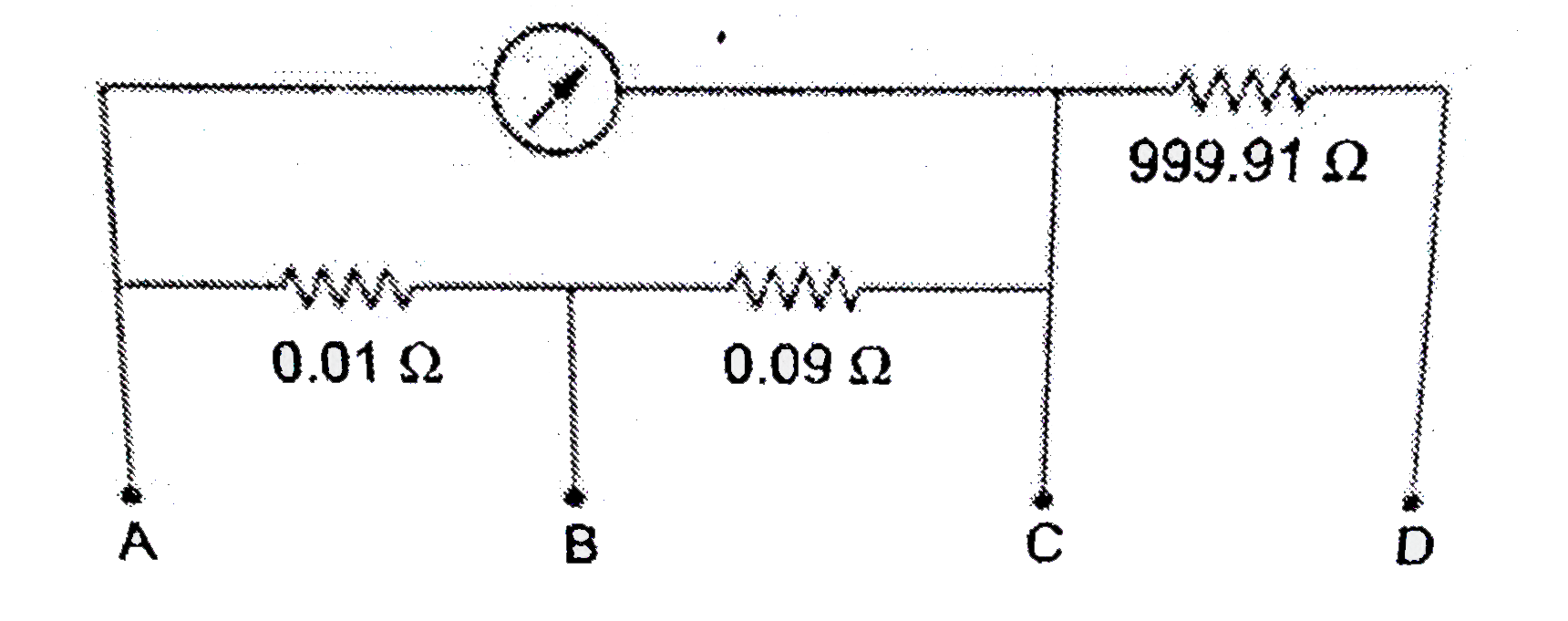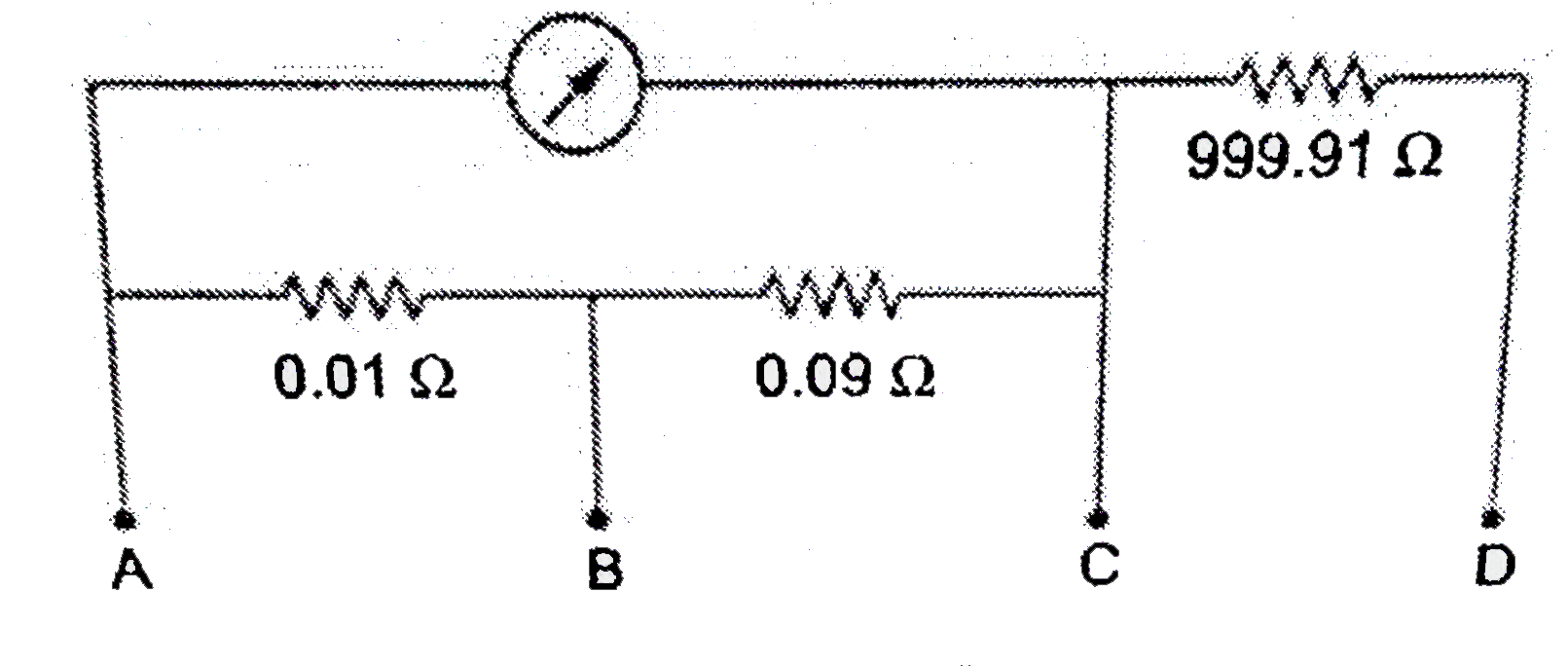An unknown transistor needs to be identified as npn and pnp type. A multimeter, wilth +ve and −ve terminals is used to measure resistance between different terminals transistor. If terminal 2 is the base of the transistor then which of the following is correct for a pnp transistor?
positive terminal 1 negative terminal 2 resistance high
positive terminal 2 negative terminal 1 resistance high
positive terninal 3 negative terminal 2 resistace high
positive terminal 2 negative termianl 3 resistance low
Step by step video & image solution for An unknown transistor needs to be identified as npn and pnp type. A multimeter, wilth +ve and -ve terminals is used to measure resistance between different terminals transistor. If terminal 2 is the base of the transistor then which of the following is correct for a pnp transistor? by Physics experts to help you in doubts & scoring excellent marks in Class 12 exams.
Updated on:21/07/2023Topper's Solved these Questions
- SEMICONDUCTOR ELECTRONICS METERIALS DEVICES AND SIMPLE CIRCUITS BOOK - MODERN PUBLICATIONCHAPTER - SEMICONDUCTOR ELECTRONICS METERIALS DEVICES AND SIMPLE CIRCUITS EXERCISE - COMPETION FILE( MULTIPLE CHOICE QUESTIONS )
17 Videos
- SEMICONDUCTOR ELECTRONICS METERIALS DEVICES AND SIMPLE CIRCUITS BOOK - MODERN PUBLICATIONCHAPTER - SEMICONDUCTOR ELECTRONICS METERIALS DEVICES AND SIMPLE CIRCUITS EXERCISE - COMPETION FILE (ASSERTION REASON TYPE QUESTIONS )
9 Videos
- SEMICONDUCTOR ELECTRONICS METERIALS DEVICES AND SIMPLE CIRCUITS BOOK - MODERN PUBLICATIONCHAPTER - SEMICONDUCTOR ELECTRONICS METERIALS DEVICES AND SIMPLE CIRCUITS EXERCISE - COMPETION FILE (MULTIPLE CHOICE QUESTIONS WITH ONLY ONE CORRECT ANSWER)
51 Videos
- RAY OPTICS AND OPTICAL INSTRUMENTSBOOK - MODERN PUBLICATIONCHAPTER - RAY OPTICS AND OPTICAL INSTRUMENTSEXERCISE - CHAPTER PRACTICE TEST
14 Videos
- WAVE OPTICALBOOK - MODERN PUBLICATIONCHAPTER - WAVE OPTICALEXERCISE - CHAPTER PRACTICE TEST
7 Videos
Similar Questions
Knowledge Check
Which of the following types of semiconductor are used in transistors?
Anpn typeBpnp typeCpn typeDBoth (1) and (2)A working transistor with its three legs marked P,Q, and Ris tested using a multimeter to Rand the other (positive) terminal to P or Q . Some resistance is seen on the muiltimeter. Which of the following is true for the transistor ?
AIt is pnp transistor with R as emitterBIt is npn transistor with R as collectorCIt is npn transistor with R as baseDIt is pnp transistor with R as collectorIn a PNP transistor, N-type semiconductor is used as the
Acollector onlyBbase onlyCemitter onlyDcollector or emitter
A working transitor with its three legs marked P,QandR is tested using a multimeter No conduction is found between P,Qby connecting the common (negative) terminal of the multimeter to Rand the other (positive) terminal to or Q some resistance is seen on the multimeter . Which of the following is true for the transistor ?
View SolutionA working transitior with its three legs marked P,QandR is tested using a multimeter No conduction is found between P,Qby connecting the common (negative) terminal of the multimeter to R and the ofther (positive) terminal to or Q some resistance is seen on the multimeter . Which of the following is true for the transistor ?
View SolutionElectrical multimeters, or multitesters, are widely used by technicians when working with electrical and electronic circuits. In this instrument, a single milliammeter connected through different resistances is used to measure currents, potential differences and resistance over different ranges.
Current always enters the multimeter at the same terminal, A, and then passes through the milliammeter as well as through other resistances, placed in series with or parallel to it. The choice of the terminal at which current leaves the instrument decides its role (ammeter, voltemeter, etc.) and its range (maximum current or voltage which it can measure).
The milliammeter shown in the circuit has a coil (or internal ) resistance of 0.9ω and gives the full-scale deflection for a current of 10mA.

If A and D are used as the terminals of the multimeter , i.e., current eneters at A and leaves at D, it will function as a voltmeter of which range?
View SolutionElectrical multimeters, or multitesters, are widely used by technicians when working with electrical and electronic circuits. In this instrument, a single milliammeter connected through different resistances is used to measure currents, potential differences and resistance over different ranges.
Current always enters the multimeter at the same terminal, A, and then passes through the milliammeter as well as through other resistances, placed in series with or parallel to it. The choice of the terminal at which current leaves the instrument decides its role (ammeter, voltemeter, etc.) and its range (maximum current or voltage which it can measure).
The milliammeter shown in the circuit has a coil (or internal ) resistance of 0.9ω and gives the full-scale deflection for a current of 10mA.

If A and C are used as the terminals of the multimeter, i.e., current enters at A and leaves at C, it will function as an ammeter of range
View SolutionElectrical multimeters, or multitesters, are widely used by technicians when working with electrical and electronic circuits. In this instrument, a single milliammeter connected through different resistances is used to measure currents, potential differences and resistance over different ranges.
Current always enters the multimeter at the same terminal, A, and then passes through the milliammeter as well as through other resistances, placed in series with or parallel to it. The choice of the terminal at which current leaves the instrument decides its role (ammeter, voltemeter, etc.) and its range (maximum current or voltage which it can measure).
The milliammeter shown in the circuit has a coil (or internal ) resistance of 0.9ω and gives the full-scale deflection for a current of 10mA.

If A and B are used as the terminals of the multimeter, i.e., current enters at A and leaves at B, it will function as an ammeter of range
View Solution
